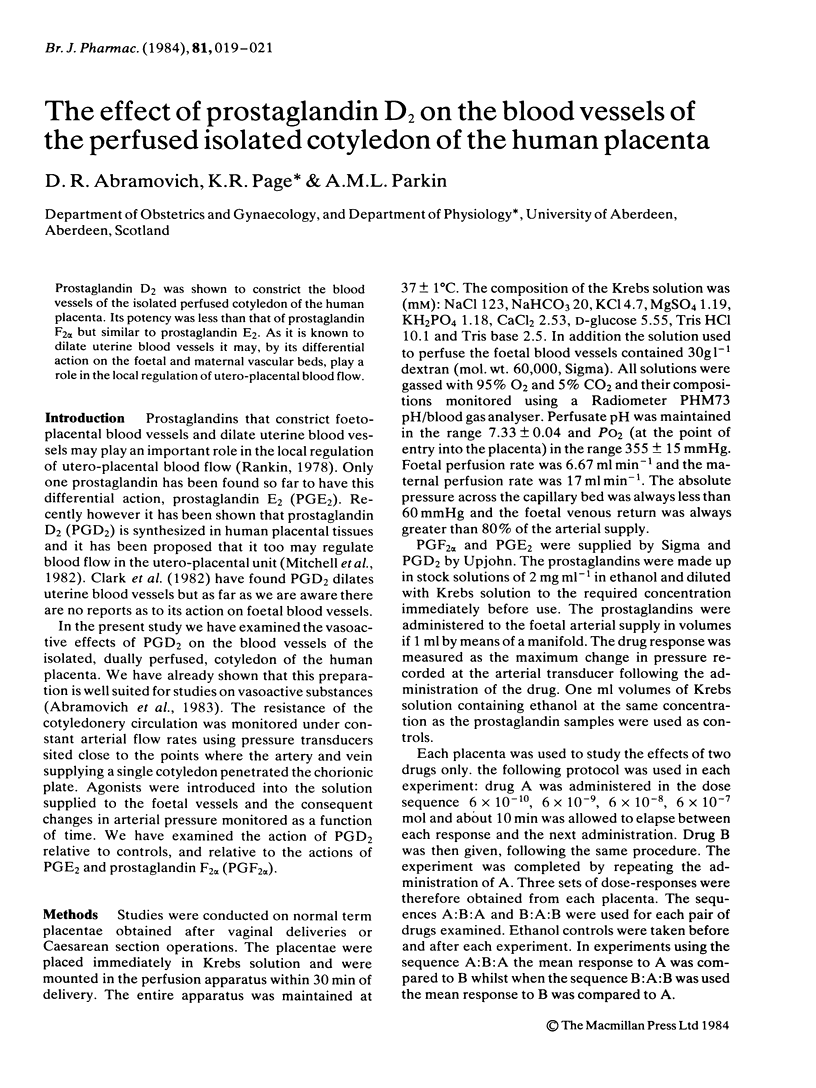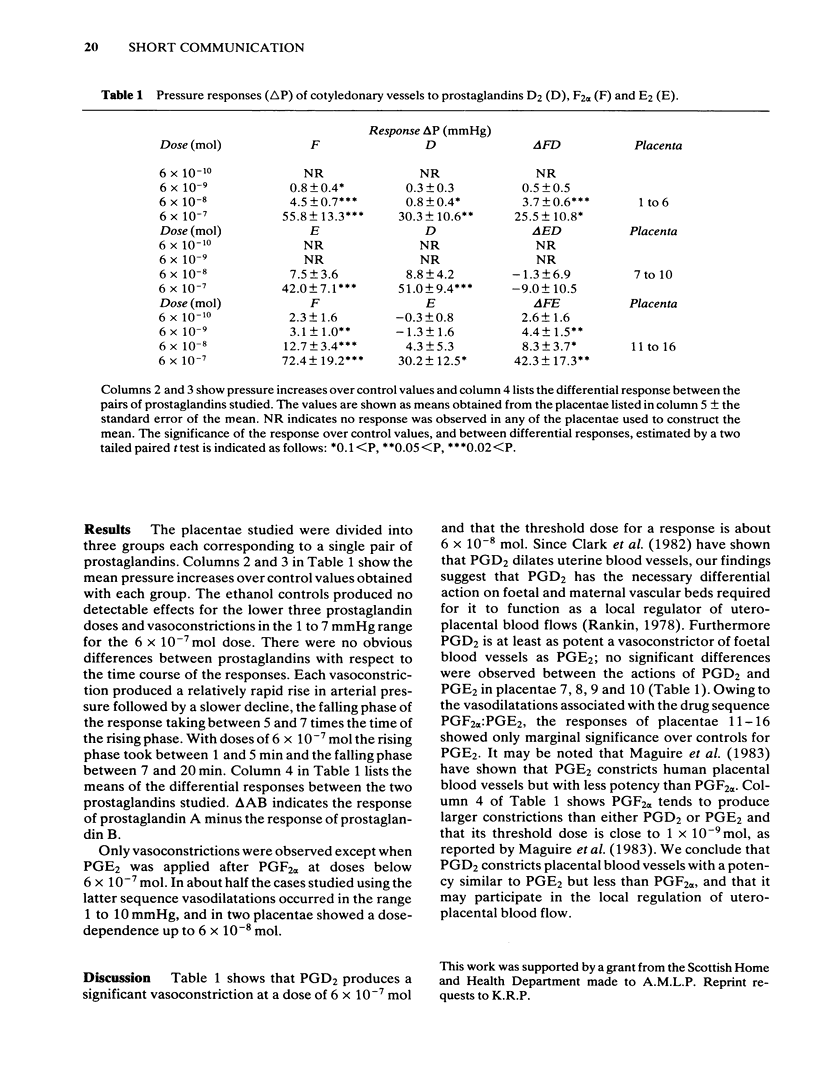Abstract
Prostaglandin D2 was shown to constrict the blood vessels of the isolated perfused cotyledon of the human placenta. Its potency was less than that of prostaglandin F2 alpha but similar to prostaglandin E2. As it is known to dilate uterine blood vessels it may, by its differential action on the foetal and maternal vascular beds, play a role in the local regulation of utero-placental blood flow.
Full text
PDF


Selected References
These references are in PubMed. This may not be the complete list of references from this article.
- Abramovich D. R., Page K. R., Wright F. Effect of angiotensin II and 5-hydroxytryptamine on the vessels of the human foetal cotyledon. Br J Pharmacol. 1983 May;79(1):53–56. doi: 10.1111/j.1476-5381.1983.tb10494.x. [DOI] [PMC free article] [PubMed] [Google Scholar]
- Clark K. E., Austin J. E., Seeds A. E. Effect of bisenoic prostaglandins and arachidonic acid on the uterine vasculature of pregnant sheep. Am J Obstet Gynecol. 1982 Feb 1;142(3):261–268. doi: 10.1016/0002-9378(82)90728-1. [DOI] [PubMed] [Google Scholar]
- Mitchell M. D., Kraemer D. L., Strickland D. M. The human placenta: a major source of prostaglandin D2. Prostaglandins Leukot Med. 1982 Apr;8(4):383–387. doi: 10.1016/0262-1746(82)90061-0. [DOI] [PubMed] [Google Scholar]
- Rankin J. H. Role of prostaglandins in the maintenance of the placental circulation. Adv Prostaglandin Thromboxane Res. 1978;4:261–269. [PubMed] [Google Scholar]


